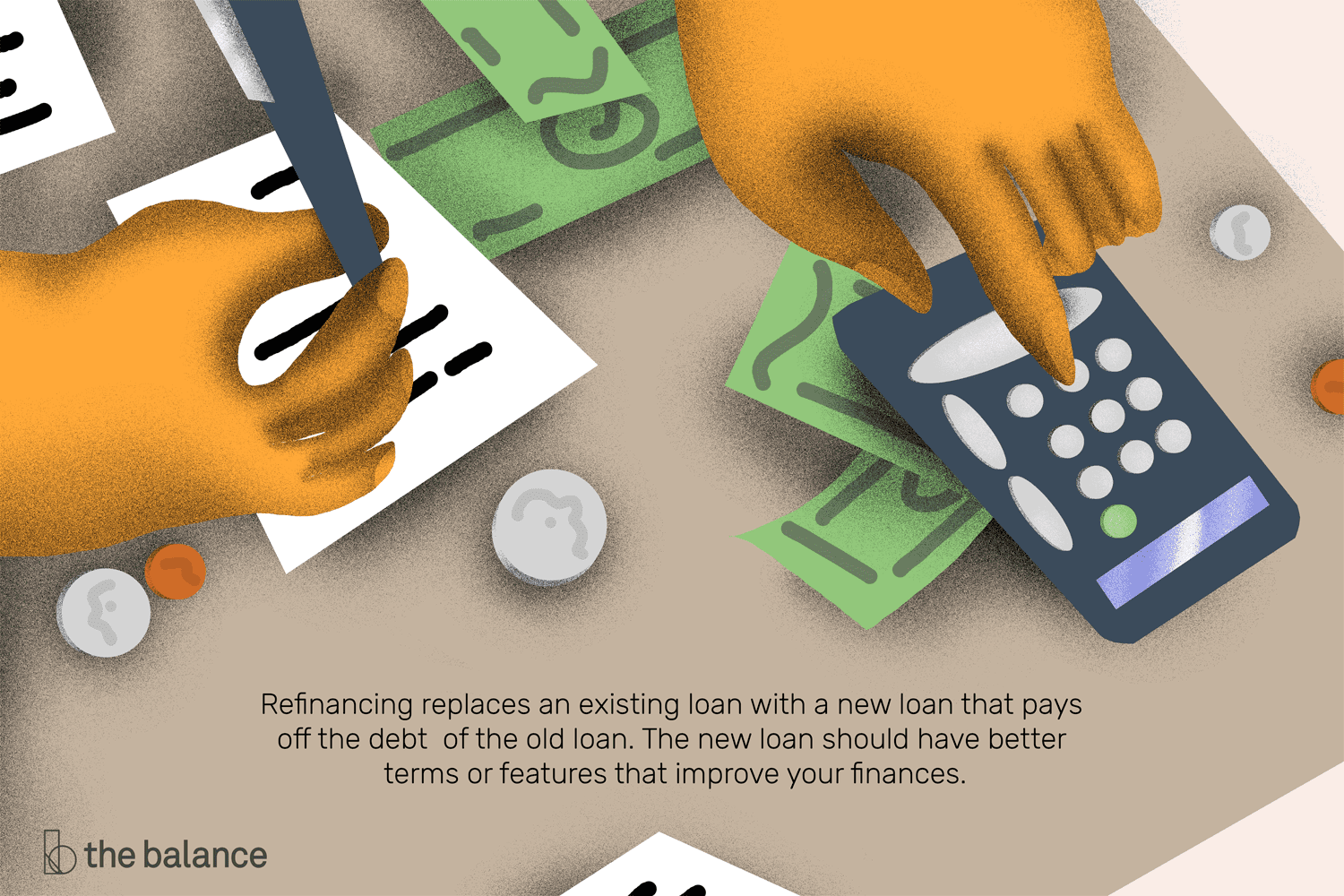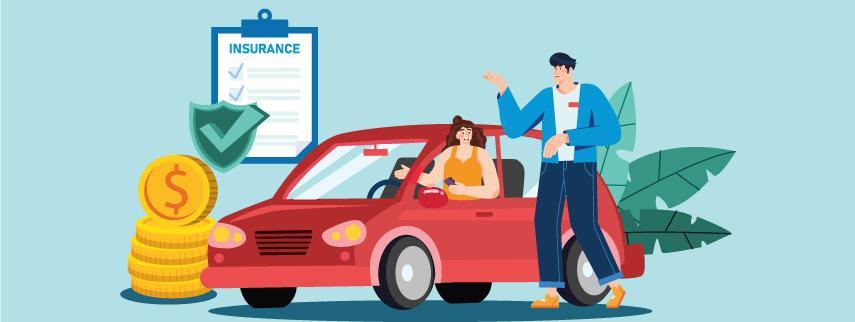Refinancing involves replacing an existing loan with a new loan that pays off the debt of the first one. The new loan should ideally have better terms or features that improve your finances to make the whole process worthwhile.
Key Takeaways
- Refinancing a loan involves taking out a new loan to pay off and replace the first one.
- Refinancing can make sense if it will lower your monthly payments by replacing a high interest rate with a lower one.
- You’ll pay all the same closing costs that you did when you took out the first loan, and this can add up to thousands of dollars upfront, depending on the size of your new loan.
- A cash-out refinance can provide you with some cash to pay for a significant life event like a wedding or to remodel or improve your home. You’ll receive the difference between your new loan balance and the old loan balance in cash.
What Is Refinancing?
You can refinance a home loan, an auto loan, or just about any other debt. You might want to do so if your existing loan is too expensive or too risky. Maybe your financial circumstances have changed since you first borrowed the money, and more beneficial loan terms might be available to you now.
Note
You can adjust certain terms of a loan when you refinance, but two factors don't change: You won't eliminate your original loan balance, and your collateral must remain in place.
You won't reduce or eliminate your original loan balance. You could, in fact, take on more debt when refinancing. This might occur if you do a cash-out refinance where you take cash for the difference between the refinanced loan and what you owe on the original loan, or when you roll your closing costs into your new loan rather than pay them upfront.
Your property might still be required as collateral for the loan, so you could still lose your home in foreclosure if you refinance a home loan but don’t make payments. Likewise, your car could be repossessed if you default on the new loan. Your collateral is always at risk unless you refinance a loan into a personal unsecured loan, which doesn't use property as collateral.
How Refinancing Works
Begin by shopping around for lenders and find one that offers better loan terms than those contained in your existing loan that you'd like to improve in some way. Apply for the new loan when you've settled on the best lender for your circumstances.
The new loan will pay off your existing debt completely and all at once when your refinance loan is approved and you complete the closing process. You would continue to make payments on the new loan until you pay it off or refinance this loan as well. To calculate a mortgage, you need a few details about the loan, which you can then input in the calculator below.
Pros and Cons of Refinancing
Refinancing has several potential benefits:
- It can lower your monthly payments if you refinance into a loan with an interest rate that's lower than your existing rate. This might happen because you qualify for a lower rate based on market conditions or an improved credit score, factors that weren't in place the first time you borrowed. Lower interest rates typically result in significant savings over the life of the loan, especially with large or long-term loans.1
- You can extend repayment by increasing the term of the loan, but you'd potentially pay more in interest costs. You also can refinance into a shorter-term loan to pay it off sooner. For example, you might want to refinance a 30-year home loan into a 15-year home loan that comes with higher monthly payments but a lower interest rate. You'd have the loan paid off in 15 fewer years.
- It might make sense to consolidate multiple other loans into a single loan if you can get a lower interest rate than what you're currently paying. Having just one loan also makes it easier to keep track of payments.
- You might prefer to switch to a loan at a fixed rate if you have a variable-rate loan that causes your monthly payments to fluctuate up and down as interest rates change. A fixed-rate loan offers protection if rates are currently low but are expected to rise, and it results in predictable monthly payments.
Note
Whether you lower the interest rate on your loan or extend the time you’ll take to repay it, your new loan payment will most likely be smaller than your original loan payment. The outcome is often a healthier monthly cash flow and more money available in your budget for other essential monthly expenses.
- Some loans, particularly balloon loans, must be repaid in a lump sum on a specific date. You might not have the funds available for a large lump-sum payment when that date comes due. It might make sense to refinance in this situation, using a new loan to fund the balloon payment in order to gain more time to pay off the debt.2
Note
You can pay a little extra toward the principal each month to reduce the loan term instead of refinancing the loan. This would save a substantial amount in interest costs.
But refinancing isn't always a smart money move. Some drawbacks include:
- It can be expensive. Refinancing costs vary by lender and by state, but be prepared to pay anywhere from 3% to 6% of the outstanding principal in refinancing fees. These can include application, origination, appraisal, and inspection fees and other closing costs. Closing costs can add up to thousands of dollars with large loans like home loans.1
- You'll pay more interest on your debt when you stretch out loan payments over an extended period. You might lower your monthly payments, but that benefit can be offset by the higher cost of borrowing over the life of the loan.
- Some loans have useful features that will be eliminated if you refinance. For example, federal student loans are more flexible than private student loans if you fall on hard times, offering deferment or forbearance plans that grant you a temporary reprieve from making payments. Federal loans might also be partially forgiven if your career involves public service. You might be better off staying with these types of favorable loans.
- You can actually increase the risk to your property when you refinance in some cases. For example, some states recognize nonrecourse home loans (these don't allow lenders to take property other than the collateral if you default on payments) to become recourse loans, which allow lenders to still hold you liable for your debt even after they seize your collateral.
Note
Upfront or closing costs might be too high to make refinancing worthwhile, and sometimes the benefits of a current loan will outweigh the savings associated with refinancing.
Find out whether your lender charges a prepayment penalty if you pay off your old loan too early. If it does, compare the costs of the penalty against the savings you'll gain from refinancing.
How To Refinance
Refinancing is like shopping for any other loan or mortgage. First, take care of any issues with your credit so your score is as high as possible and you qualify for the lowest interest rates. You should have at least a rough idea of the rates and other terms you're looking for in your new loan.
Note
Remember that these terms should represent an improvement over the terms of your existing loan. It's helpful to do a quick loan amortization to see how your interest costs would change with different loans.
Shop around to find a qualified lender offering the best terms. Get at least three or four quotes from competitors before inquiring with your current lender about what it's willing to offer. You might be able to get even better terms from your current lender if it wants to keep your mortgage.
Don't take on any new debt during the refinancing process, as it could hinder the deal. Carefully review the new loan terms and all associated fees before signing on the dotted line so you know what to expect financially when it's time to make payments.
Should I Refinance?
It's worthwhile to consider refinancing a loan in a few instances.
Do a break-even calculation to determine how long it will take for the savings from refinancing to exceed the associated costs. What some homeowners fail to consider when refinancing is that it could take a long time to recover the costs, and they might not want to live in the property long enough to reap the savings.1
You might have a loan or two bearing a high interest rate if you've come out of a difficult financial situation that damaged your credit score. Maybe you lost your job, or you had a medical emergency that left you buried in debt. Your interest rate will reflect that if you had to take out a loan when your credit score was low. You can refinance those loans at a lower rate once you've repaired your credit score.
You can do a cash-out refinancing to trade the equity in your home for cash, assuming your credit is healthy. You can reinvest your equity/cash into your home to make some long-needed repairs or to renovate the property.





